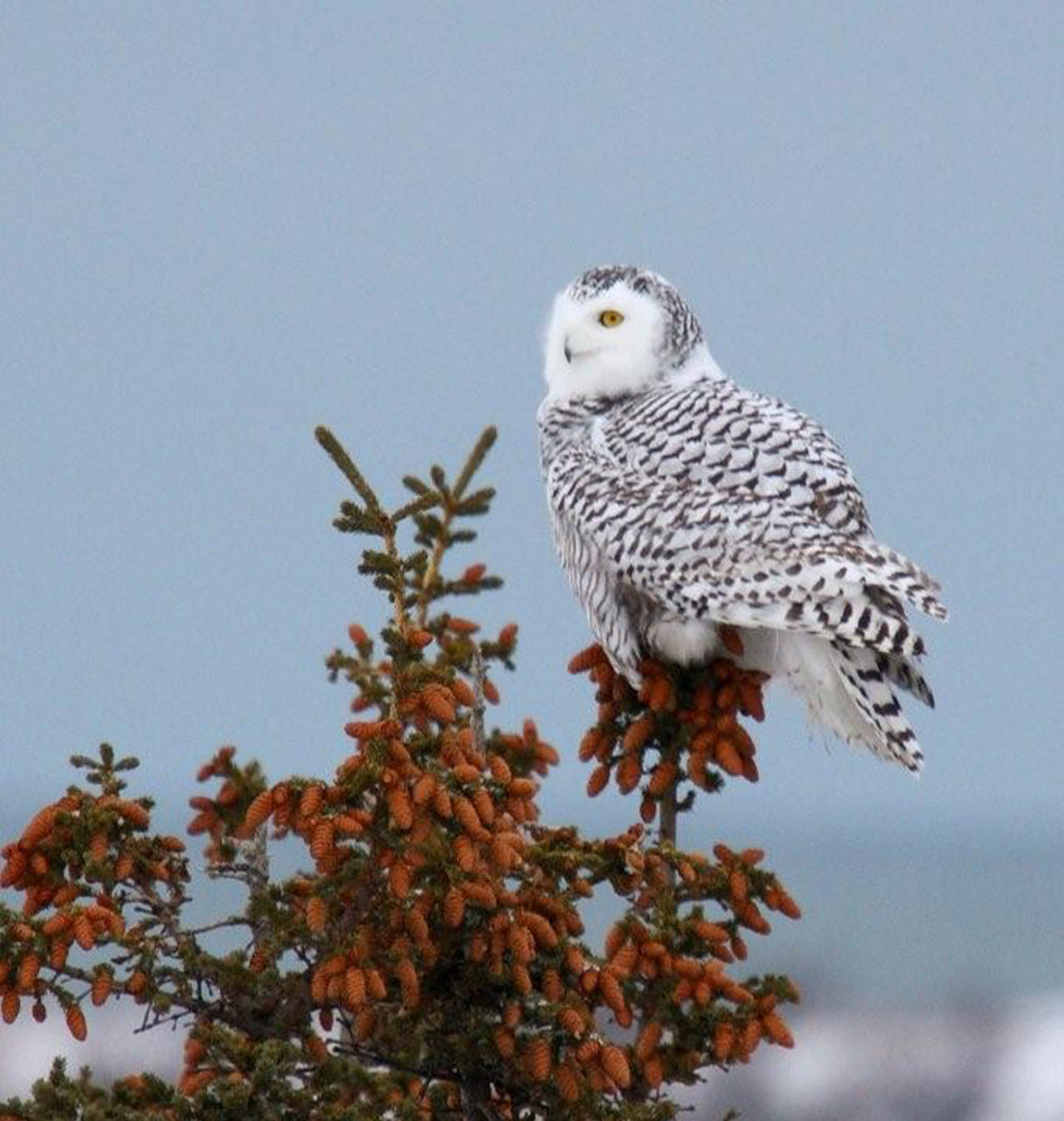Scientific name: Bubo scandiacus
Average length/height: 0.5m (1.6ft); wingspan – 1.5m (4.9ft)
Average weight: 2.3kg (5lbs); male – 1.8kg(4lbs)
Characteristics
Males can become almost fully white once mature, whereas females have many dark brown bars across their feathers. Young males look a lot like adult females and eventually become whiter. Snowy owls can maintain a body temperature of 38-40 degrees Celsius in some of the coldest winter temperatures thanks to their thick feathers. Their heads look very round due to significantly reduced feather tufts for ears. The feathers around their eyes reflect sound to their ears to help them to detect prey even in low light and their claws are 25-35mm long to help them catch larger prey (HWW, n.d.).
Territory/Geographical Locations
Due to living in the Arctic and the long daylight hours that come with it, snowy owls are not nocturnal. They inhabit the northern parts of Canada and in the winter can be found in the prairies, marshes, and shorelines in southern Canada. They can be found in North America and Eurasia.
Population & Reproduction
The reproduction for snowy owls is highly dependent on the availability of lemmings. In areas that have plenty of food they can lay clutches up to 12 eggs while in leaner areas this drops by about 50 percent. They will travel up to 100 kilometers to breed in areas with a healthier lemming population. Incubation is around one month and chicks hatch in July at approximately two-day intervals. Chicks have big appetites and parents are kept busy needing to provide over 100 kilograms of food before chicks can start hunting for themselves.
There are an estimated 200,000 snowy owls in the wild (HWW, n.d.).
Diet
Lemmings are their meal of choice, but snowy owls can easily catch larger prey such as Arctic hares, ptarmigan, foxes and seabirds. They like to fly low over the tundra, around 10 to 15 meters above the earth before diving to catch their prey. Poor on table manners, they swallow prey whole, those that can fit anyway. Fur, teeth, bones and feathers are compacted in the stomach into pellets that are later brought back up. Snowy owls consume seven to 12 lemmings a day, or a comparable mass of food to maintain health.










